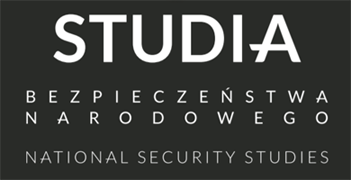REVIEW PAPER
THE CONFLICT IN UKRAINE – A NEW-GENERATION WARFARE
1
Wojska Specjalne Sił Zbrojnych RP
Publication date: 2018-12-19
SBN 2018;14(2): 269-280
KEYWORDS
hybrid warfaremodern warfarepropagandaconflict in Ukraineconflict in Donbasideologychaosmanipulationasymmetry
ABSTRACT
The aim of this paper is to illustrate the underlying concepts and characteristics of hybrid warfare – a new type of modern warfare utilising unconventional methods and “proxy wars” which involve national minorities, terrorist groups and local communities. The paper also describes the current capabilities of states to engage in new warfare without declaring war while using all resources available, and identifies the advanced disinformation and propaganda mechanisms employed to achieve political objectives. The paper further provides a background to the outbreak of war in Ukraine by highlighting the causes and consequences of Russia's preparing for and launching the invasion of a European country in contravention of all international laws and agreements. The subject is dealt with comprehensively, from the annexation of Crimea to the destabilisation of south-eastern Ukraine by separatist military groups.
REFERENCES (8)
1.
W.J. Nemeth, Future war and Chechnya: A case for hybrid warfare, Monterey, CA 2002[online],http://calhoun.nps.edu/bitstre... [accessed on 02/09/2015].
2.
В. Герасимов, Ценность науки в предвидении, „Военно-промышленныи курьер”, 27/02/2013 [online], http://www.vpk-news.ru/article..., English translation, https://inmoscowsshadows. wordpress.com/2014/07/06/the-gerasimov-doctrine-and-russian-non-linear-war/ [accessed on 31/08/2015].
3.
The third Eastern Partnership summit took place in Vilnius on 28-29 November 2013. It was then that Ukraine refused to sign the Association Agreement and Deep and Comprehensive Free Trade Agreement. For more on the summit, see http://www.osw.waw.pl/pl/publi... (accessed on 12/12/2014).
4.
R. Sikorski, Statement by the Minister of Foreign Affairs on the objectives of Polish foreign policy [in:]http://www.msz.gov.pl/pl/polit... (accessed on 12/12/2014).
5.
J. Kłoczowski, Europa Środkowo-Wschodnia i jej miejsce w Europie [East-Central Europe’s place in Europe], The Yearbook of the Institute of East-Central Europe, 2007, vol. 5, pp. 11-32.
6.
The Budapest Memorandum of 05 December 1994 (under which the Russian Federation, the UK and the US commit to respecting Ukraine's independence, sovereignty and inviolability of borders); the Treaty on Friendship, Cooperation, and Partnership between Ukraine and the Russian Federation of 31 May 1997 (under which both parties committed to respecting their territorial integrity and not to violate the existing borders between them); the Treaty on the Russian-Ukrainian Border between the Russian Federation and Ukraine of 28 January 2003 (under which Crimea was and will continue to be an integral part of Ukraine).
7.
A. Racz, Putin’s Humanitarian Convoy and the Road to Ukraine: Russia may intend to change the course of the fighting, The Finnish Institute of International Affairs, FIIA Comment 10/2014, Helsinki 2014.
8.
S. Siebold, Some 12,000 Russian soldiers in Ukraine supporting rebels: U.S. commander, Reuters [online]<http://www.reuters.com/>, (04/11/2015).
We process personal data collected when visiting the website. The function of obtaining information about users and their behavior is carried out by voluntarily entered information in forms and saving cookies in end devices. Data, including cookies, are used to provide services, improve the user experience and to analyze the traffic in accordance with the Privacy policy. Data are also collected and processed by Google Analytics tool (more).
You can change cookies settings in your browser. Restricted use of cookies in the browser configuration may affect some functionalities of the website.
You can change cookies settings in your browser. Restricted use of cookies in the browser configuration may affect some functionalities of the website.


